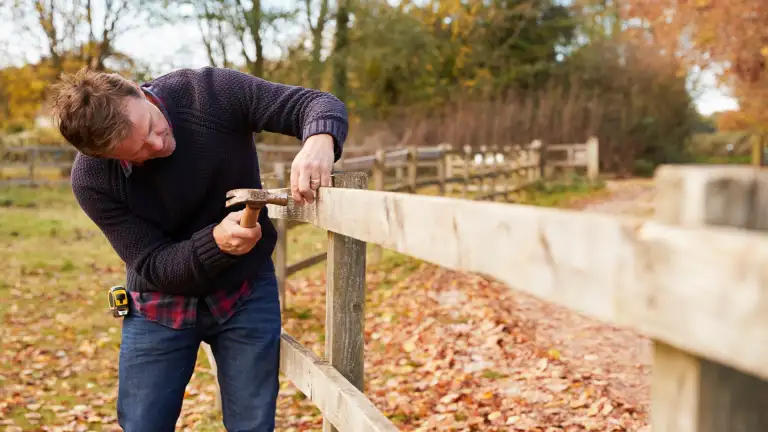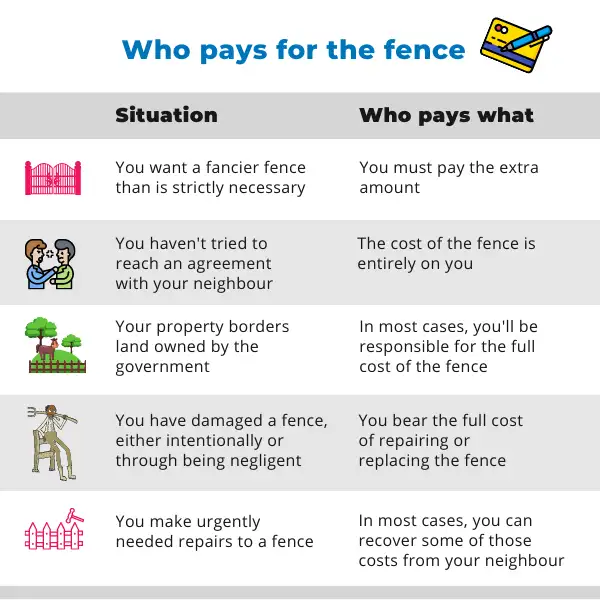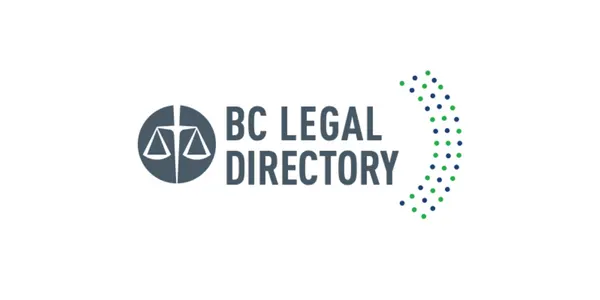
Do I need my neighbour's agreement before I can build a fence between our properties?
Fences serve many purposes. They can mark property boundaries, keep pets or children safe, offer privacy, or limit unwanted guests. But they can also lead to tensions and conflicts. Neighbours may disagree about where a fence can be built, what type of fence to build, or who should bear the cost of building or repairing a fence. Learn how to deal with problems involving fences and neighbours.
What you should know
In BC, property owners are allowed to build a fence (or plant a hedge) around their property. Some rules restrict what kind of fence is allowed and where it can be placed, as explained below.
Except in a few specific situations, no one is required to build a fence. No law says a fence must divide neighbouring properties; most people simply agree to have one. However, in some specific situations, a fence can be legally required. For example:
Some communities have local bylaws that require swimming pools to be fenced.
Many communities have local bylaws that require dog owners to keep their dog within a securely fenced area.
Some housing developments (for example, some strata properties) have bylaws that require fencing around individual units or common property.
Find a local bylaw
On the website CivicInfo BC, you can search across local government websites province-wide to find local bylaws for your community. In the search box, type in a keyword on point, the word bylaw, and your community name.
For example, to find a fence bylaw for Victoria, you could type fence bylaw victoria.
There are rules on where a fence can be placed. A property owner can build a fence anywhere on their side of the dividing line between two properties (also called the property line). If a property owner wants to put a fence right along the property line, they can do so only if the owner of the adjacent property agrees.
A person can’t build a fence on property that’s not theirs — unless they get permission to do so.
It is the property owner’s responsibility to ensure they locate the property line accurately. A land survey can help identify the location of a property line. A survey will show the location of the iron pins in the ground (known as survey monuments) that mark the property corners and boundaries.
How to get a land survey
If there's a dispute about where a fence should go, a land survey will show the location of a property line between adjoining properties. You can search the BC land title authority to see if a land survey is part of the public record for a property. You can also hire a registered BC land surveyor to come to the property and identify the property line.
If a property owner installs a fence completely on their side of the property line, the fence is theirs. And so is the bill for it.
If the fence is on the property line, the neighbours on either side are, legally, equal partners in the fence. Generally, each must pay half the cost of building or repairing the fence. But there are exceptions.

Most cities and towns in BC have local bylaws that determine the kind of fence you can put up. These bylaws set the rules: what materials you can (and can’t) use, how high the fence can be, and so on.
For example, in many communities, a fence between residential properties can’t be made from barbed wire or razor wire. It can't be electrified.
Maximum fence height often varies based on the zoning of the property and where the fence is on the property. Typically, a front-yard fence can be no more than four feet high. Side and back fences can be up to six feet high.
On corner lot properties, another factor may be in play: traffic. In many communities, a fence on a corner lot can’t obstruct the sightlines of drivers at the intersection.
Check with your city or town hall to find the fence bylaw that applies in your community. On the website CivicInfo BC, you can search across local government websites province-wide to find bylaws relating to fences in your community.
Some types of properties may have additional rules
If you live in a planned community or a strata property, there may be additional rules around fence building. A strata property’s bylaws, for example, may dictate the style, size and maintenance requirements of the fence. Or they may not allow a fence at all.
If you’re thinking of building a fence, talk with the neighbours who live in adjoining properties.
Even if the fence will be on your land — in which case you don’t strictly need your neighbour’s agreement to build it — people appreciate being consulted about changes that can affect their views or their property value.
To be clear, if you want to build a fence along the property line, you must consult your neighbour. You can’t simply impose a shared fence on them. You two need to agree on the type of the fence and the cost.
Do you need a building permit?
Typically, no. However, many communities have local bylaws requiring a building permit in certain situations. For example, if you’re putting up a fence on a retaining wall or around a swimming pool, you’ll usually need a permit.
Before you start the actual fence building, find out if there are any restrictions on your property. For example, fences aren’t permitted across an easement unless they’re specifically allowed under that easement.
It’s your responsibility to find the correct property line. You can search the BC land title authority. If they have a land survey for the property, it’ll show the property line. Otherwise, you can hire a registered BC land surveyor to come out and find the property line for you.
Before you make a final plan for your fence, consider the nearby trees and plants. There may be tree roots that could interfere with your fence — now or in the future. A tree with an overhanging canopy might drop a heavy branch on your handiwork.
When you’re building the fence
When building the fence, don’t move any survey monuments that mark the corners or boundaries of the property. This is an offence under the Criminal Code.
Call before you dig
You can contact BC 1 Call (for free) at 1-800-474-6886 to find out what's buried on your property, such as pipelines, telecommunications cables, water and sewage lines, and electrical wires. Knowing what's under your property reduces the risk of accidents when digging.
Sometimes it turns out a fence isn’t on the property line after all. This can cause conflict, particularly where a fence you built is actually in your neighbour’s yard.
Under BC law, either neighbour can apply to court for a resolution. The court can do one of three things:
Order removal. The “encroaching owner” must dismantle any part of the fence that is enclosing the neighbour’s land.
Grant an easement. The encroaching owner is allowed to keep the fence where it is. But the neighbour is awarded compensation for the easement.
Transfer title. The encroaching owner receives title to the enclosed land. The neighbour is compensated for the transfer.
In deciding which of these three courses of action to take, a court will consider:
The intentions of the encroaching owner. Was this an accident or a knowing intrusion? The court will be more likely to order the fence removed if the encroaching owner seems to have deliberately built onto the neighbouring property.
The extent of the intrusion. How much does the fence intrude? If the diversion from the property line is minor, the court will be less likely to order removal and more likely to grant an easement or transfer of title.
The practicalities. How costly would it be to remove or relocate the fence? If it’s an expensive proposition — say, the fence is made of concrete — the court will more likely grant an easement or transfer title, rather than order removal.
A faster way to get into court
Where a fence intrudes onto adjoining property, either neighbour can seek a resolution under BC law. This can be done through an application by petition in BC Supreme Court. This route is generally quicker and cheaper than a full legal action. The entire process can take one or two months between the delivery of materials and the hearing.
Many cities and towns in BC have local bylaws requiring property owners to maintain their fence in good repair. If the fence runs along a property line, property owners on both sides are expected to contribute equally to its upkeep.
In rural areas, the owners of adjacent properties must maintain and repair the fence between them, according to this BC law. Each owner is liable to the other for half of any cost reasonably incurred for upkeep and repair.
Work out problems
Whether you’re thinking of building a fence or you’re concerned about a neighbour’s fence, the first step is to try talking with your neighbour. Explain your plans or concerns, and ask for their thoughts.
If you’re the fence builder, start by explaining why you want it. (It's hard to argue against, say, a fence intended to keep children safe.) Describe the type of fence you’re planning, its location, and its estimated cost. If you aim to put it right on the property line, you need your neighbour’s consent (see above under what you should know). Invite the neighbour to explore options that will work for both of you.
If you have issues with a neighbour’s fence — for example, it’s too high or it intrudes onto your property — explain your concerns. If your neighbour understands where you’re coming from, it can be easier to explore solutions together.
To help you prepare for the conversation, we offer tips for talking with your neighbour and a template for preparing for the talk.
Getting quotes
If you want to build or repair a fence, it can help to get a written cost quote from one to three contractors. That way, you and your neighbour have concrete options to consider. If the neighbour agrees to proceed, you can both sign a copy of the successful quote and the amount you each agree to pay. This can prevent problems down the line.
If talking with your neighbour doesn’t resolve matters, you can write a letter setting out your plans or concerns. For example, say you’re concerned with the height of a neighbour’s planned new fence. In your letter to your neighbour:
1. Explain your concerns
"The fence is higher than what is allowed under the local bylaws, and it'll block the sunshine on my vegetable garden."
2. Suggest ways the situation might be resolved
"It would make a real difference if the height of the fence was reduced by two feet."
3. Reveal your intentions if they outright refuse
"I'd rather not have to, but I'm prepared to get the municipality involved."
If you're unable to resolve the matter directly with your neighbour, you could consider mediation. This involves you and your neighbour meeting with a mediator, who'll work to help you reach an agreement. Mediation is quicker and much less expensive than taking legal action. We explain here how mediation works.
Finding a mediator
You can search for a mediator based on the city or town you live in and the type of problem you have. On the ADR Institute website or the Mediate BC website, select community in the area of expertise or practice.
Whether you’re concerned about a neighbour’s fence or planning to build a fence, there can be circumstances that lead you to contact your local municipality. CivicInfo BC has contact information for municipalities across the province.
For example, you may suspect your neighbour’s fence doesn’t comply with local bylaws, such as rules about a fence’s height, materials or placement. In this case, find out who’s responsible for enforcing the relevant bylaw. After receiving your complaint, the municipality may inspect the problem and order your neighbour to fix it by issuing a notice of bylaw violation.
If, in building a fence, you want to do something that isn’t allowed under the local bylaws, you can seek a relaxation of the rules. This will require you to appear before your municipality’s “board of variance” to explain how the restriction in question causes you hardship.
If none of the above steps have resolved the problem, it may be time to consider legal action. For example, if your neighbour has built a fence that encloses part of your property, you could start an action for trespass. You could also apply to court for a resolution under this BC law. See what you should know, above, for what’s involved in this type of claim.
If your claim is for less than $35,000, you can bring a legal action in Small Claims Court. It’s faster and less complicated than suing in the British Columbia Supreme Court.
If your claim is for less than $5,000, you can file online with the Civil Resolution Tribunal. It's faster yet again, and designed to help parties resolve their dispute collaboratively.
Taking legal action against a neighbour will almost certainly strain your relationship — no small matter since you’re living side by side. Think of it, therefore, as a last resort.
Common questions
If you want to build a fence along the property line, you can do so only if the owner of the adjacent property agrees. It makes no difference if you intend to pay the total cost.
If your neighbour doesn’t agree, your best bet is to build the fence so that it falls entirely on your side of the property line. As such, it’s especially important that you accurately locate the property line. (See what you should know, above.)
If you intend to remove or alter an existing fence along a property line, you must have either your neighbour’s agreement or a court order.
A fence built on the property line belongs to both property owners. You are jointly responsible for the upkeep of the fence. Neither can take it down without the other’s permission.
Who can help

Association of BC Land Surveyors
Maintains a searchable list of land surveyors and regulates surveying in BC.

Access Pro Bono's Free Legal Advice
Volunteer lawyers provide 30 minutes of free legal advice to people with low or modest income.

Access Pro Bono’s Everyone Legal Clinic
Clinicians provide affordable fixed-fee services on a range of everyday legal problems.

Legal Referral Service
Helps you connect with a lawyer, notary or paralegal for a free 15- to 30-minute consult to see if you want to hire them.

BC Legal Directory
Search for a lawyer by community, area of law, or language spoken. From the Canadian Bar Association, BC Branch.

ADR Institute of BC
Maintains a roster of qualified mediators and arbitrators who help with dispute resolution.


